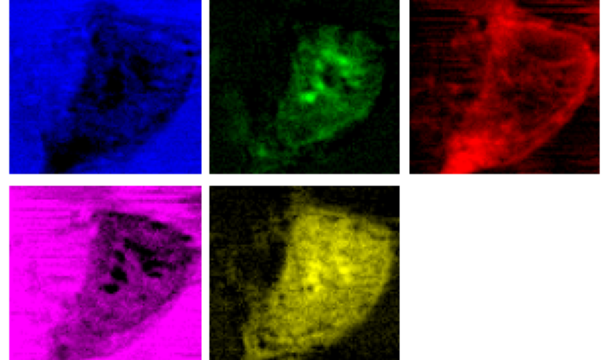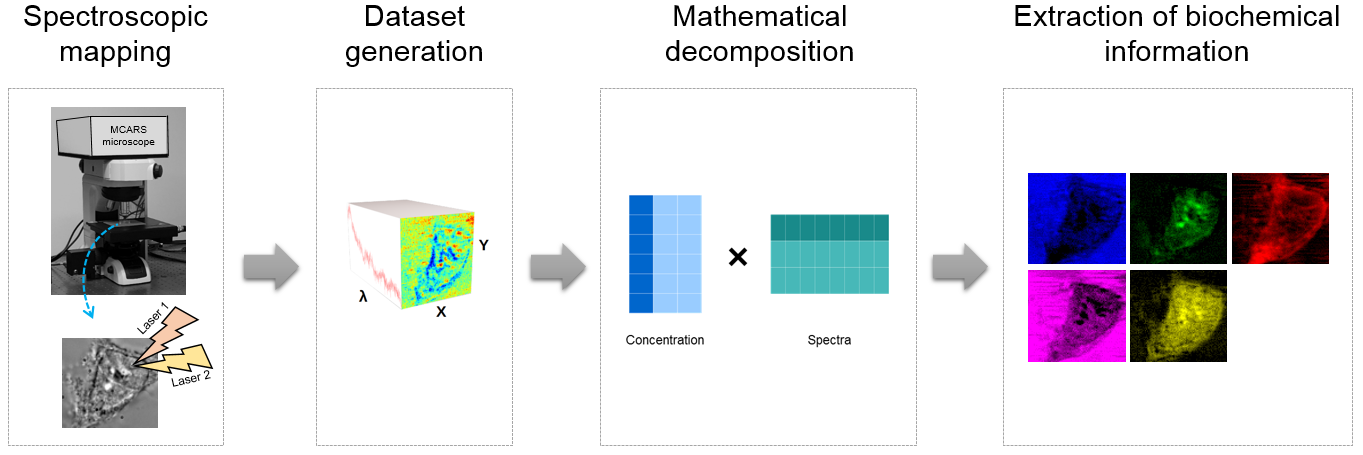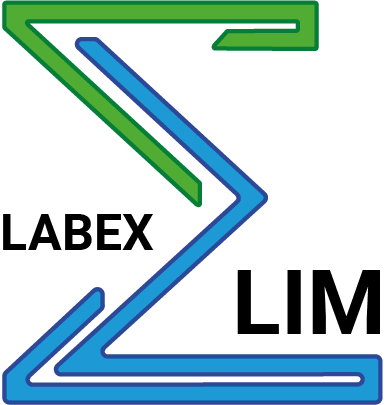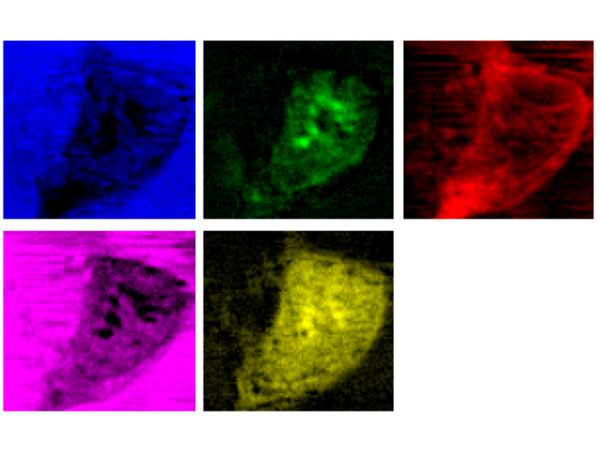
[Publication] A new methodology for hyperspectral cell imaging and segmentation using multiplex coherent anti-Stokes Raman microspectroscopy (MCARS)
Over the past two decades, coherent Raman imaging has been widely applied to live-cell imaging. This allows to probe the intracellular lipid, protein, nucleic acid, and water content with high-acquisition rate and sensitivity. Multiplex coherent anti-Stokes Raman scattering (MCARS) microspectroscopy using sub-nanosecond laser pulses is now recognized as a mature and straightforward technology for label-free bioimaging, offering the high spectral resolution of conventional Raman spectroscopy with reduced acquisition time.
In the framework of the challenge “Biomaterials, biophotonics and imaging for diagnosis” of the flagship “Improving health through advanced diagnostics and therapies” of the LABEX ∑-LIM and through the thesis work of Damien Boildieu, a team of researchers developed a new methodology for hyperspectral cell imaging and segmentation using MCARS microspectroscopy, described in a publication entitled “Coherent anti-Stokes Raman scattering cell imaging and segmentation with unsupervised data analysis” in the journal Frontiers in Cell and Developmental Biology.
The term “hyperspectral” means that the collected datasets contain a high number of spectral channels (one thousand, typically), unlike other imaging approaches that focus on speed rather than spectral quality.
This new method combines the MCARS imaging technique with unsupervised data analysis based on multivariate curve resolution (MCR). The MCR process is implemented under the classical constraint of signal non-negativity and, in a more original way, under a new spatial constraint based on cell segmentation. The approach allows to save time, to improve the analysis of intra/extra-cellular content and to reduce sample preparation costs.
This work was carried out in collaboration with LASIRE – Laboratory of Spectroscopy for Interactions, Reactivity and Environment and the Department of Chemistry of the Faculty of Sciences of Kyushu University, Fukuoka (Japan) and is being pursued through a New-Aquitaine Region project entitled BELENOS for which this new method will be used to characterize a new bioceramic material. Another project is submitted on the development of artificial intelligence algorithms for hyperspectral MCARS data processing.

Photo courtesy: Philippe Leproux, Amandine Magnaudeix
About the publication
Coherent anti-Stokes Raman scattering cell imaging and segmentation with unsupervised data analysis
by Damien Boildieu, Tiffany Guerenne, Ludovic Duponchel,Vincent Sol, Jean-Michel Petit, Éric Champion, Hideaki Kano, David Helbert, Amandine Magnaudeix, Philippe Leproux and Philippe Carré
Frontiers in Cell Dev. Biol., Sec. Cellular Biochemistry
Volume 10 – 2022 | https://doi.org/10.3389/fcell.2022.933897
Received: 01 May 2022; Accepted: 11 July 2022; Published: 16 August 2022.


